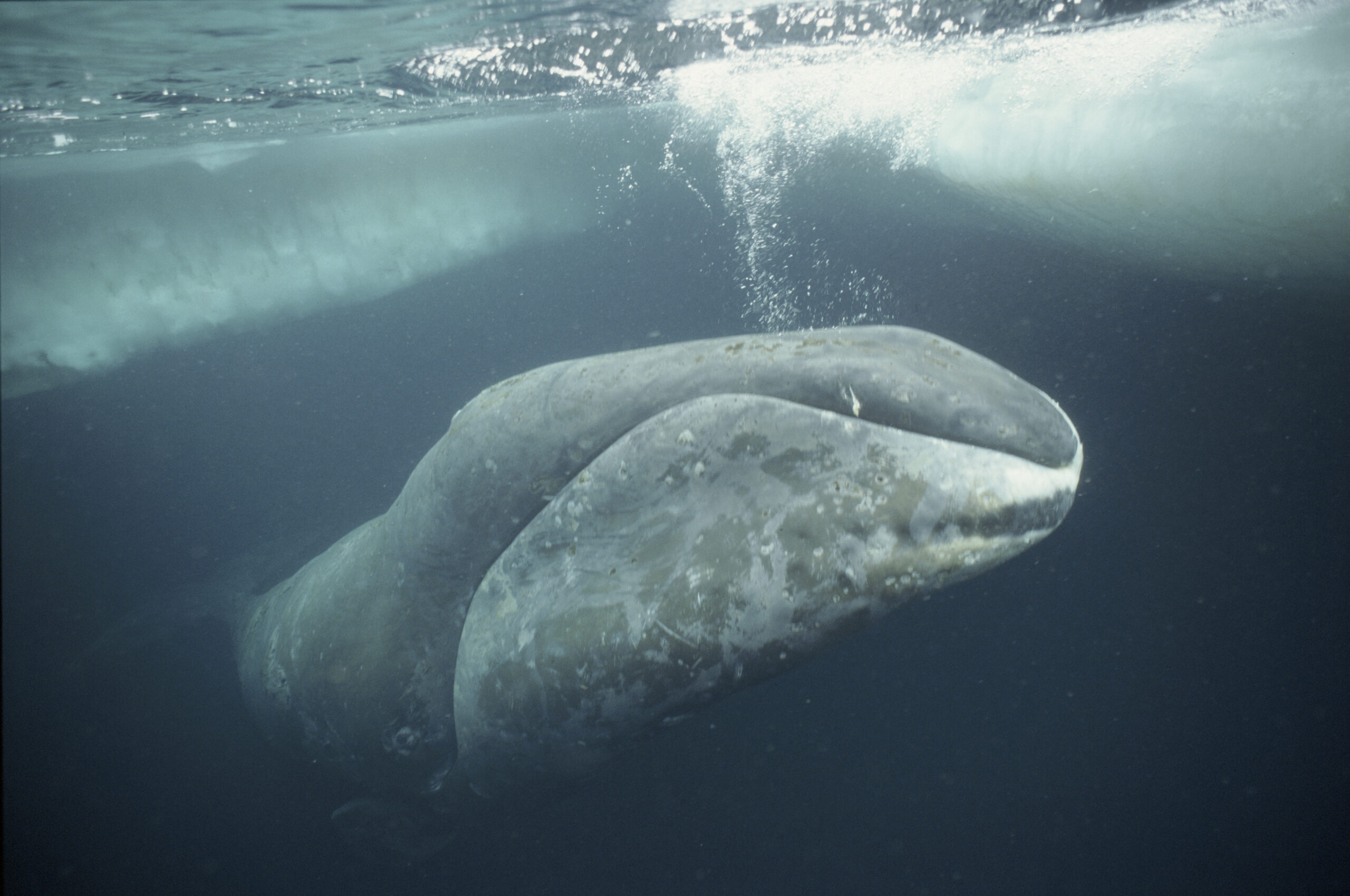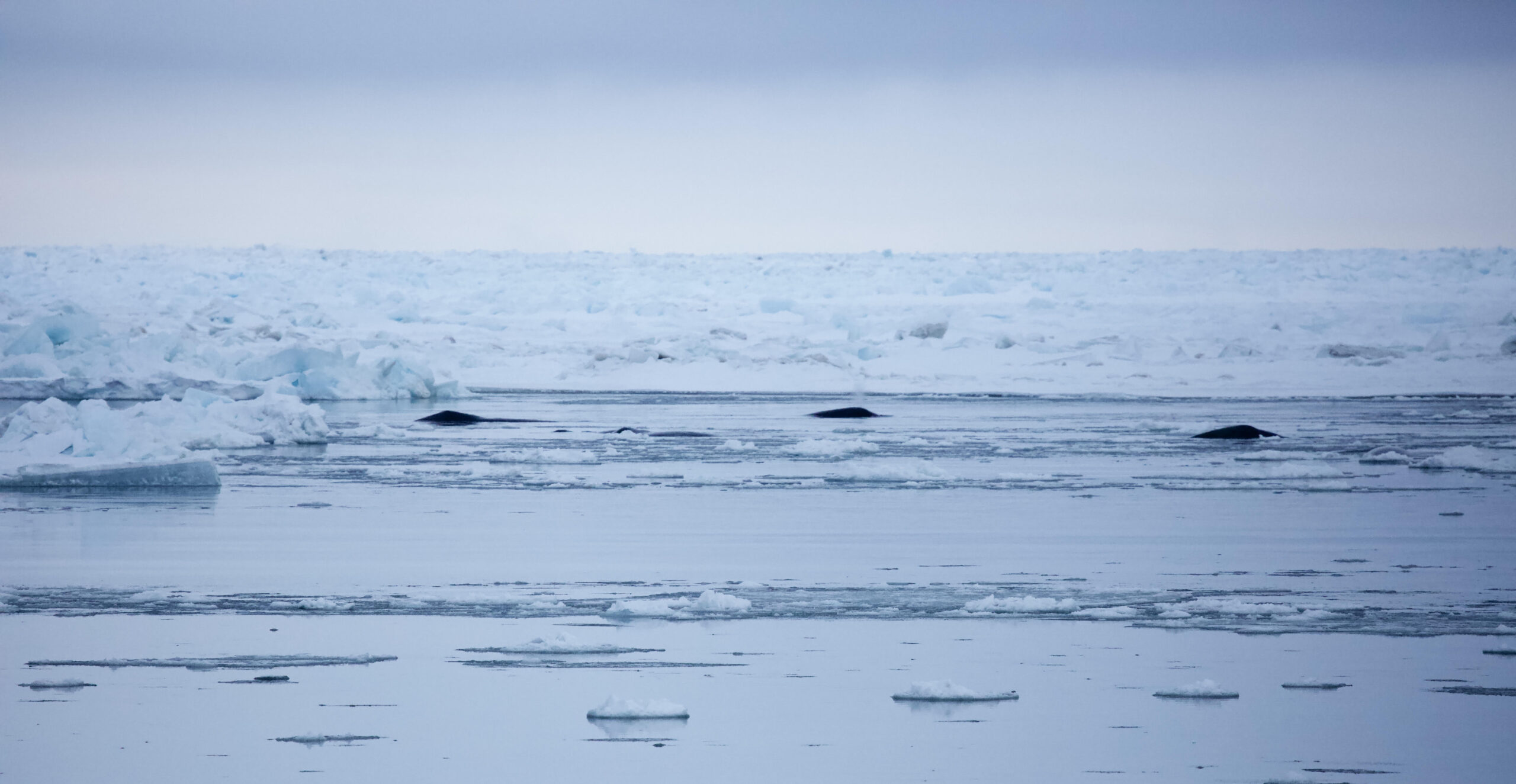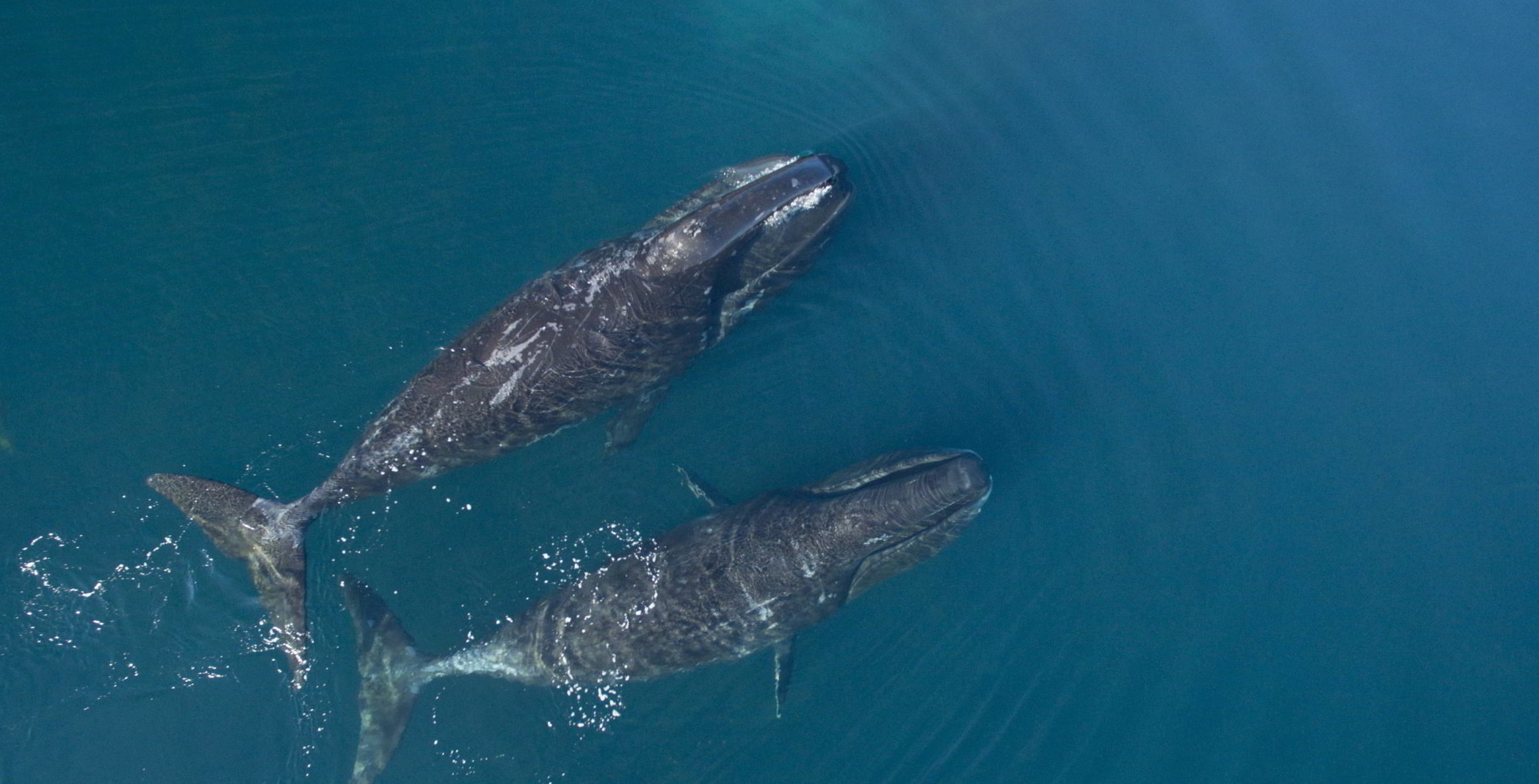Bowheads at risk: As vessels find new routes, bowhead whales face new threats
By Angela Szesciorka
The climate crisis is upending a unique and complex ecosystem that has existed in the Arctic for millennia. The loss of sea ice means more vessels can pass through the Bering Strait, bringing more ocean noise and pollution and driving up the risk of catastrophic oil spills and deadly ship strikes.
What will this mean for bowhead whales — an ecologically and culturally important species — and the Indigenous communities that rely on them?

The excitement is palpable as the telltale signs of spring mark Earth’s reawakening from the cold, dark winter. Nowhere is this more evident than in the Bering Strait, the sole marine gateway between the Pacific and Arctic oceans. Daylight lengthens rapidly and snowpack begins to melt, triggering photosynthesis.
Marine phytoplankton blooms follow the retreating ice edge from the Bering Sea into the Chukchi and Beaufort seas. This area becomes one of the world’s most biologically productive ecosystems, attracting millions of birds and hundreds of thousands of marine mammals eager to feed on a buffet of plankton, clams and fish.
By April, the largest population of bowhead whales — the Bering-Chukchi-Beaufort population — is following narrow cracks in the ice to make their way from their winter grounds in the northwestern Bering Sea through Bering Strait into the Chukchi Sea and finally to their summer feeding grounds in the Canadian Beaufort Sea.
These whales are uniquely adapted to Arctic conditions, with large heads that can crack through the ice to breathe and a thick blubber layer keep them warm. They navigate the frigid, ice-filled waters with ease.
Ancient singers contribute to research
Bowhead whales can live for 200 years, so it is possible that some individuals have been making the same journey every year for two centuries. The journey is accompanied by an ever-changing soundtrack, as males sing elaborate songs on their way to and from their winter grounds. The songs are so unique and complex that scientists have dubbed bowhead whales the jazz singers of the sea.
To take advantage of this near-constant singing, scientists deploy hydrophones (underwater microphones) that sit on the ocean floor, passively recording sounds day and night over many years to provide clues about bowhead whale movements and how their behaviours are changing over time.

Changes to bowhead migration patterns have long been documented by Indigenous Knowledge holders. More recently, evidence from satellite tagging data has complemented this knowledge. With just over 10 years of data from passive acoustic monitoring, scientists are observing changes: some whales are spending winters in the southern Chukchi Sea instead of migrating further south to the northwestern Bering Sea. Others are spending more time at their feeding grounds in the Canadian Beaufort Sea and expanding their summer range into the Chukchi Sea.
These shifts accompany changes to the ecosystem that has been home to these whales for thousands of years. Rapidly increasing air temperatures and decreasing sea ice—harbingers of a “new Arctic”—are concerning to the Siberian Yupik, Central Yupik, Chukchi and Iñupiaq residents in the Arctic who depend on the seasonal migration of marine mammals for subsistence.
Villages dotting the coastlines of Russia and Alaska closely track bowhead whale spring migration in the Bering Strait and spring and fall migration in northwest Alaska, where Indigenous People have harvested bowhead whales for millennia.
A spectrogram (visual representation of sound) of bowhead whale song recorded in the Bering Strait. Time (mm:ss) is displayed on the x-axis, and frequency (Hz) is displayed on the y-axis.
More vessels eyeing Arctic sea routes
The loss of sea ice is also bringing another change to the Arctic: increased vessel traffic. Ships are now finding open water in areas that were once unnavigable for much of the year due to heavy ice. A number of developments are propelling these vessels to seek new routes. For example, the Panama Canal has experienced drought exacerbated by climate change.
Multiple ships have run aground in the Suez Canal, blocking all shipping activity, and pirates are deterring transits through the Red Sea. Compared to the longer alternative route around the Cape of Good Hope off southern Africa, the Northwest Passage and the Northern and Transpolar Sea Routes are beginning to look more profitable.
In the Chukchi-Bering Sea region, the number of vessels transiting through the Bering Strait annually increased by more than 55 per cent from 2014 to 2022. Many of these were oil tankers, some of which recently transited the Northern Sea Route along the Russian coast without the aid of an icebreaker—an achievement that was once an impossibility.
In addition to oil and gas development, rare mineral mining, commercial fishing, and vessel-based tourism are also on the rise in the region, which will mean even more vessel traffic passing through the Bering Strait gateway and bowhead whale habitat.

A study about 10 years ago found that only two per cent of subsistence-harvested Bering-Chukchi-Beaufort whales had vessel strike scars. But the true number of deaths due to ship strikes is unknown due to the difficulty of monitoring evidence of strikes or recovering whales in remote areas—and an unknown fraction of carcasses strand or remain floating.
Scientists know from ship-strike research in other regions that changes to habitat use, coupled with increasing vessel traffic, could put whales more directly in the path of vessels. Increasing ship traffic will also increase ocean noise, and an oil spill in this remote region could cause catastrophic ecological damage.
In the face of these rapid and concerning changes, the scarcity of formal shipping lanes or vessel speed limits can make the Arctic feel like the Wild West. Given the environmental, societal and economic importance of the Arctic, we need proactive, preventative measures to protect this complex ecosystem, which supports fisheries, migratory birds and mammals, and Indigenous communities whose identity, culture and survival are strongly tied to the Arctic.
Angela Szesciorka is a marine mammal ecologist who uses passive acoustic monitoring and tagging to examine the movements of baleen whales and the threats they face in climate- and human-impacted ecosystems.
This article originally appeared in WWF Arctic’s latest issue of The Circle, “Making Waves: Getting it right for Arctic whales.”

